Search Images
Browse Content (p. 471)

Image
Ramesses II Offering to Khnum
Wall relief of Ramesses II (r. 1279-1213 BCE) presenting vases of wine to Khnum, the god of the source of the Nile. From the inner part of the Temple of Beit el-Wali, a rock-cut temple in Nubia built by Pharaoh Ramesses II and dedicated to...
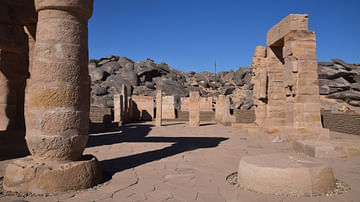
Image
Gerf Hussein Temple, Egypt
The free-standing courtyard of Gerf Hussein temple in New Kalabsha near Aswan in southern Egypt. This temple was erected by Setau, the Viceroy of Kush, on behalf of pharaoh Ramesses II (r. 1279-1213 BCE) in Lower Nubia. It was dedicated to...
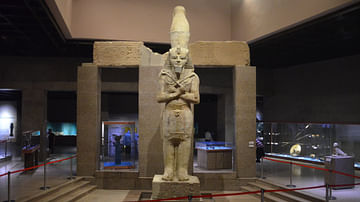
Image
Ramesses II from Gerf Hussein
Statue of Ramesses II (r. 1279-1213 BCE), one of several such figures that acted as pillars in the forecourt of the temple of Gerf Hussein in Nubia. The temple, dedicated to Ptah and Hathor and built by Setau, Viceroy of Nubia, consisted...
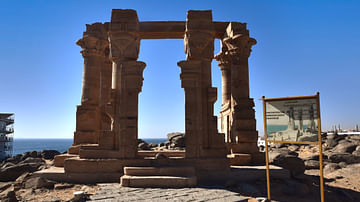
Image
Kiosk of Qertassi, New Kalabsha
The Kiosk of Qertassi is a small but elegant Roman kiosk with four lotus-headed columns inside and two Hathor pillars at the entrance. It dates to the early Roman period (1st century CE) and resembles the Kiosk of Trajan in Philae. The monument...
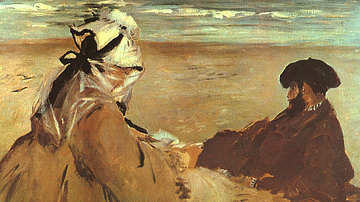
Image
On the Beach by Manet
An 1873 oil on canvas painting, On the Beach (Sur la plage), by Edouard Manet (1832-83), the French modernist painter. The work, painted on the coast near Boulogne, shows the influence of the impressionists on Manet. Here he uncharacteristically...
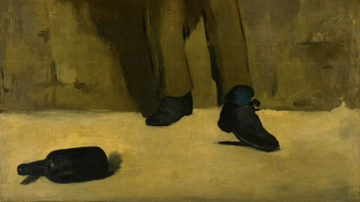
Image
The Absinthe Drinker by Manet
An 1859 oil on canvas painting, The Absinthe Drinker, by Edouard Manet (1832-83), the French modernist painter. The first great work by Manet, his choice of a seemingly homeless man as his main subject and on such a large canvas (1.8 m/6...
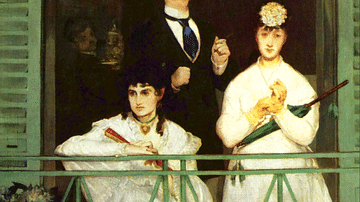
Image
The Balcony by Manet
An 1868-9 oil on canvas painting, The Balcony, by Edouard Manet (1832-83), the French modernist painter. Manet liked intimate scenes with a very tight focus which presented sometimes more theatre than realism. Here, three figures stand, or...
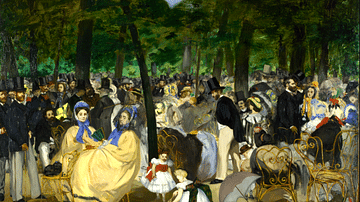
Image
Music in the Tuileries Gardens by Manet
An 1862 oil on canvas painting, Music in the Tuileries Gardens, by Edouard Manet (1832-83), the French modernist painter. This work has often been called the first modern painting since it broke the artistic convention that artists avoided...
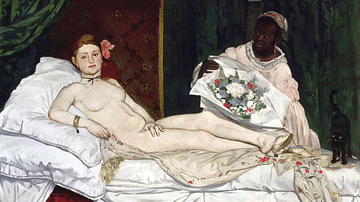
Image
Olympia by Manet
The 1863 oil on canvas painting, Olympia, by Edouard Manet (1832-83), the French modernist painter. The painting was exhibited in the 1865 Salon in Paris and shocked the art world for its presentation of a contemporary courtesan fully nude...
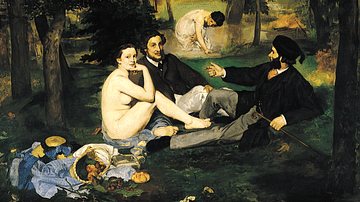
Image
Lunch on the Grass by Manet
An 1863 oil on canvas painting, Lunch on the Grass (Déjeuner sur l’herbe), by Edouard Manet (1832-83), the French modernist painter. This painting shocked the art world when displayed in the Salon des Refusés for placing a nude female figure...